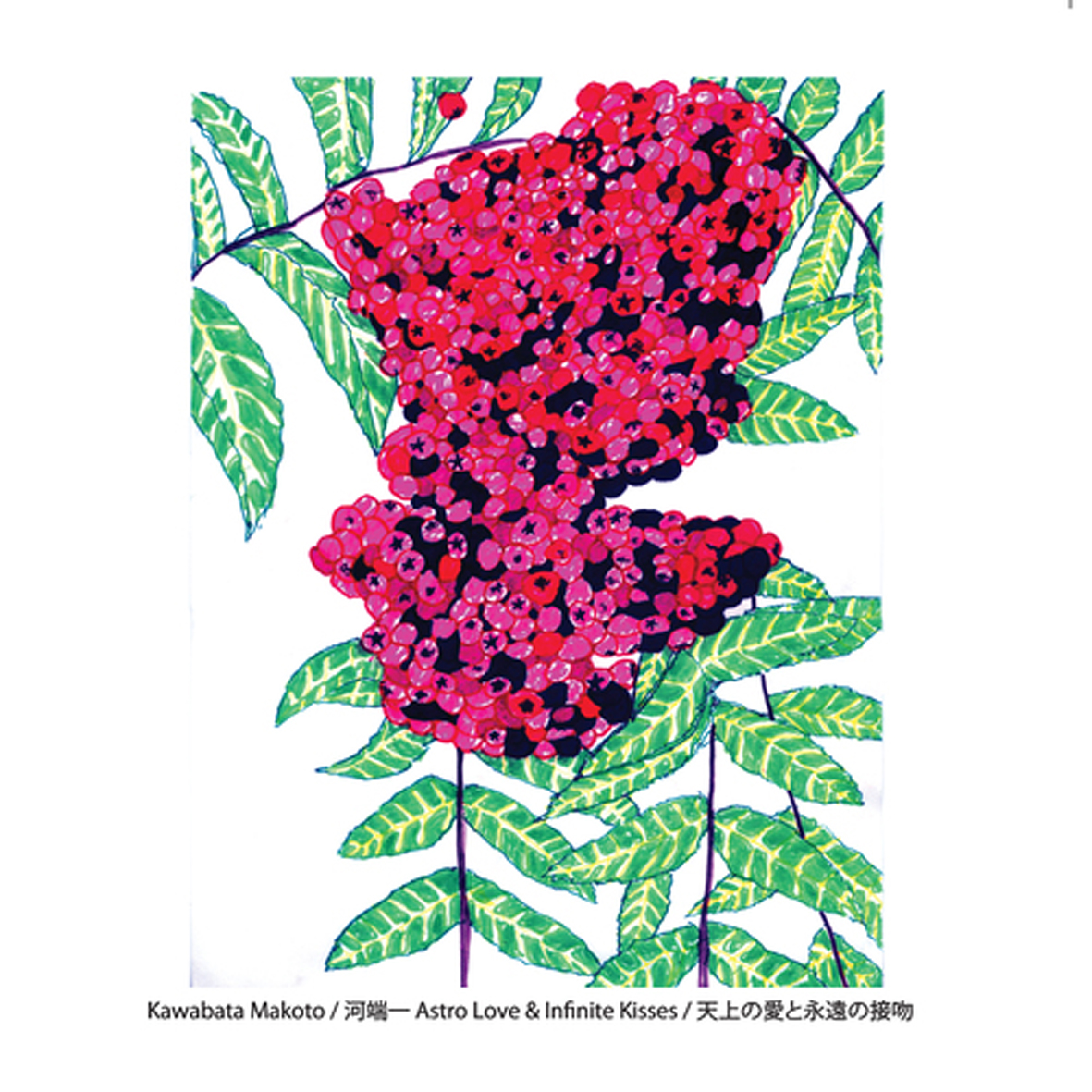 I have admittedly become quite numbed to the power of Acid Mothers Temple in recent years, but that has certainly not stopped me from appreciating the unique talents of Kawabata Makoto.  If anything, I am weary of Makoto's primary outlet because their high-volume maximalism hides or precludes so many appealing facets and nuances of his artistry.  Thankfully, his solo albums–especially the ones on VHF–do no such thing and allow his exotic and eccentric vision to unhurriedly blossom without distraction (most of the time, anyway).  On this latest opus, Makoto adeptly blends echo-heavy Krautrock guitar, traditional Indian music, and his own distinctively lysergic tendencies to weave a sprawling fantasia of warped and trance-inducing drones.
I have admittedly become quite numbed to the power of Acid Mothers Temple in recent years, but that has certainly not stopped me from appreciating the unique talents of Kawabata Makoto.  If anything, I am weary of Makoto's primary outlet because their high-volume maximalism hides or precludes so many appealing facets and nuances of his artistry.  Thankfully, his solo albums–especially the ones on VHF–do no such thing and allow his exotic and eccentric vision to unhurriedly blossom without distraction (most of the time, anyway).  On this latest opus, Makoto adeptly blends echo-heavy Krautrock guitar, traditional Indian music, and his own distinctively lysergic tendencies to weave a sprawling fantasia of warped and trance-inducing drones.
Two new shows just for you. We have squeezed out two extended release episodes for this weekend to get you through this week. They contain mostly new songs but there's also new issues from the vaults. The first show features music from Rider/Horse, Mint Field, Robert Aiki Aubrey Lowe, Anastasia Coope, ISAN, Stone Music, La Securite, Bark Psychosis, Jon Rose, Master Wilburn Burchette, Umberto, Wand, Tim Koh, Sun An, and Memory Drawings. The second episode has music by Laibach, Melt-Banana, Chuck Johnson, X, K. Yoshimatsu, Dorothy Carter, Pavel Milyakov, Violence Gratuite, Mark Templeton, Dummy, Endon, body / negative, Midwife, Alberto Boccardi, Divine. Cow in Maui from Veronika in Vienna. Get involved: subscribe, review, rate, share with your friends, send images! |



 When Gary Mundy's Ramleh reemerged in 2009 after over a decade of inactivity, both the recorded output and performances were mostly skewed towards the project’s noise and power electronics history. With long time member Anthony Di Franco, the duo released the excellent Valediction album and embarked on a series of performances, updating the harsh electronic sound Mundy began as a teenager in the 1980s. Circular Time, however, is a return to the idiosyncratic psychedelic rock sound Mundy and Di Franco (along with other collaborators) fully realized in the 1990s. I have enjoyed every variant of Ramleh that I have heard, but I always had a soft spot for this more musical era and, thankfully, Circular Time is a return to form in every possible way.
When Gary Mundy's Ramleh reemerged in 2009 after over a decade of inactivity, both the recorded output and performances were mostly skewed towards the project’s noise and power electronics history. With long time member Anthony Di Franco, the duo released the excellent Valediction album and embarked on a series of performances, updating the harsh electronic sound Mundy began as a teenager in the 1980s. Circular Time, however, is a return to the idiosyncratic psychedelic rock sound Mundy and Di Franco (along with other collaborators) fully realized in the 1990s. I have enjoyed every variant of Ramleh that I have heard, but I always had a soft spot for this more musical era and, thankfully, Circular Time is a return to form in every possible way.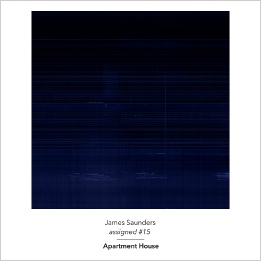 James Saunders spent close to a decade working on his #[unassigned] series. Comprising 175 variations of modular compositions for solo instruments, the project was designed to emphasize unique instrumentation, techniques, and spaces. Repetition was anathema and multiplicity prized—once performed, each arrangement would then be set aside in favor of the next configuration, never to be played again. The UK-based multinational ensemble Apartment House were the first to try an #[unassigned] composition in 2000 and they executed several different versions afterward, until the project was concluded in 2009. With assigned #15, they return to Saunders’s work, now presented as re-performable composition scored for seven musicians who play, among other things, viola, chamber organ, dictaphone, and shortwave radio.
James Saunders spent close to a decade working on his #[unassigned] series. Comprising 175 variations of modular compositions for solo instruments, the project was designed to emphasize unique instrumentation, techniques, and spaces. Repetition was anathema and multiplicity prized‚Äîonce performed, each arrangement would then be set aside in favor of the next configuration, never to be played again. The UK-based multinational ensemble Apartment House were the first to try an #[unassigned] composition in 2000 and they executed several different versions afterward, until the project was concluded in 2009. With assigned #15, they return to Saunders‚Äôs work, now presented as re-performable composition scored for seven musicians who play, among other things, viola, chamber organ, dictaphone, and shortwave radio.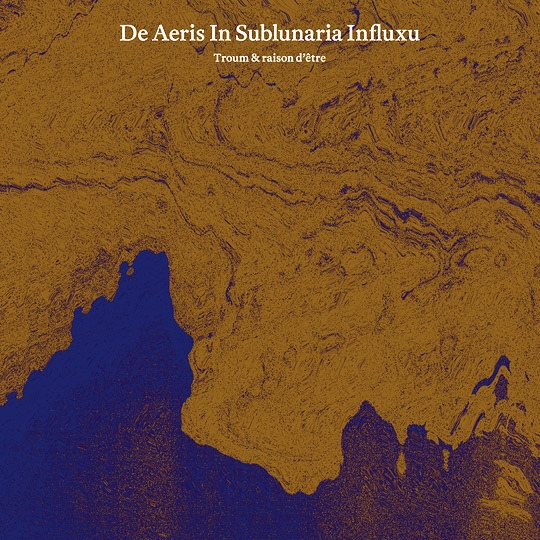 I do not think there are two currently active artists that capture the classic ambient sound, faithful to its inception, with an appropriate tinge of post-industrial darkness than Troum and raison d'étre. The former lean more towards a lighter, delicate sonic purity, while the latter's work is colored with the darkness and malignant sounds of the associated Cold Meat Industries label. This collaboration then seems the perfect setup for these two artists who are similar, but complement each other well in their differences. The result is a largely satisfying collaboration that sounds as it should given the two artists, but occasionally hindered by some duller moments.
I do not think there are two currently active artists that capture the classic ambient sound, faithful to its inception, with an appropriate tinge of post-industrial darkness than Troum and raison d'étre. The former lean more towards a lighter, delicate sonic purity, while the latter's work is colored with the darkness and malignant sounds of the associated Cold Meat Industries label. This collaboration then seems the perfect setup for these two artists who are similar, but complement each other well in their differences. The result is a largely satisfying collaboration that sounds as it should given the two artists, but occasionally hindered by some duller moments.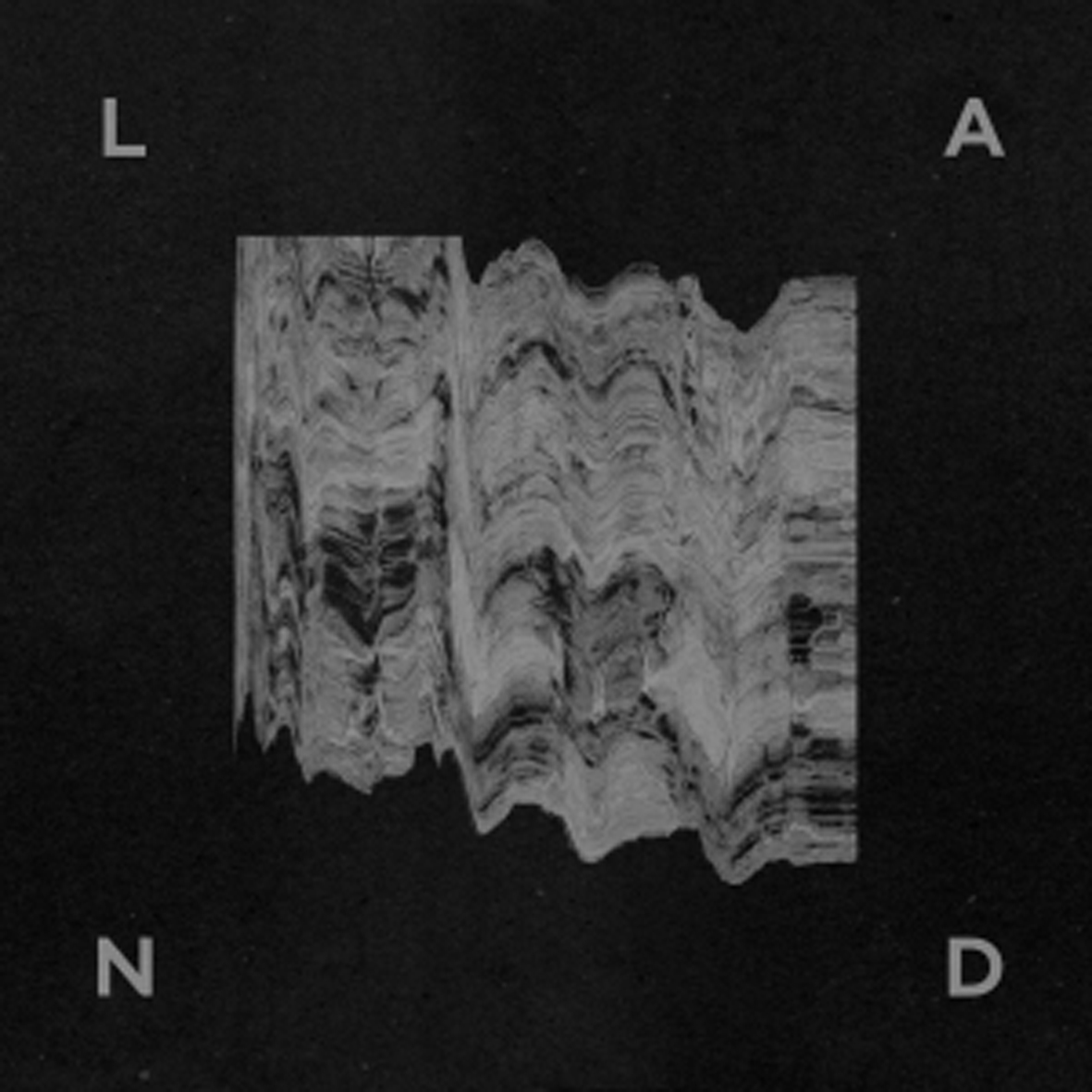 I enjoyed L A N D‚Äôs debut album quite a bit, but I was completely knocked sideways by the radical transformation that has occurred with Anoxia. ¬†Now apparently a Daniel Lea solo project (Matthew Waters is gone), this latest album completely abandons the industrial noir-jazz aesthetic of its predecessor in favor of something that resembles some sort of sci-fi tribal death cult armed with nothing but junkyard percussion and some stolen construction equipment. ¬†I could not possibly be happier or more surprised with that change.
I enjoyed L A N D’s debut album quite a bit, but I was completely knocked sideways by the radical transformation that has occurred with Anoxia.  Now apparently a Daniel Lea solo project (Matthew Waters is gone), this latest album completely abandons the industrial noir-jazz aesthetic of its predecessor in favor of something that resembles some sort of sci-fi tribal death cult armed with nothing but junkyard percussion and some stolen construction equipment.  I could not possibly be happier or more surprised with that change.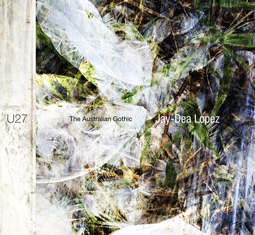 On his Sounds Like Noise website, Jay-Dea Lopez expresses concern that the natural sounds found in the northern part of New South Wales, Australia are disappearing. Suburbia, as he puts it, is ever-encroaching and with it has come the suffocating noise of commercialization and technology. That the one will snuff the other out, or damage it irreparably, appears inevitable. Motivated by that threat, Lopez recorded sections of the Main Arm valley in New South Wales, near Mullumbimby at the Queensland border, and used them to compose The Australian Gothic, an album that reproduces some of the unique sounds made by the fauna in that region and, curiously, combines them with man-made noises and rhythms. Without the distortion and the apparently manipulated segments, Gothic would be an audio index of birds, insects, and domesticated animals—a recording of the soon-to-be departed. With them, it’s a more complicated composition, a piece of music that attempts to imitate and preserve nature, but that ultimately integrates it with a touch of its so-called opposite.
On his Sounds Like Noise website, Jay-Dea Lopez expresses concern that the natural sounds found in the northern part of New South Wales, Australia are disappearing. Suburbia, as he puts it, is ever-encroaching and with it has come the suffocating noise of commercialization and technology. That the one will snuff the other out, or damage it irreparably, appears inevitable. Motivated by that threat, Lopez recorded sections of the Main Arm valley in New South Wales, near Mullumbimby at the Queensland border, and used them to compose The Australian Gothic, an album that reproduces some of the unique sounds made by the fauna in that region and, curiously, combines them with man-made noises and rhythms. Without the distortion and the apparently manipulated segments, Gothic would be an audio index of birds, insects, and domesticated animals—a recording of the soon-to-be departed. With them, it’s a more complicated composition, a piece of music that attempts to imitate and preserve nature, but that ultimately integrates it with a touch of its so-called opposite. Colin Potter is a bit of an unusual case, as he is a justifiably well-known figure in experimental music circles due to his involvement with Current 93 and Nurse With Wound (among many others), yet his solo career remains something of a woefully underheard and underappreciated endeavor.  A large part of that is because most of Potter’s oeuvre to date has quietly gone out into the world via limited edition CDRs and cassettes on his own ICR label, thus eluding most casual fans.  Consequently, it is something of an event for Rank Sonata to get released on vinyl.  It certainly warrants it though, as the album’s epic centerpiece and raison d’être, "A Wider Pail of Shale," is a trance-inducing tour de force of industrial-damaged outsider techno that should not be missed.
Colin Potter is a bit of an unusual case, as he is a justifiably well-known figure in experimental music circles due to his involvement with Current 93 and Nurse With Wound (among many others), yet his solo career remains something of a woefully underheard and underappreciated endeavor.  A large part of that is because most of Potter’s oeuvre to date has quietly gone out into the world via limited edition CDRs and cassettes on his own ICR label, thus eluding most casual fans.  Consequently, it is something of an event for Rank Sonata to get released on vinyl.  It certainly warrants it though, as the album’s epic centerpiece and raison d’être, "A Wider Pail of Shale," is a trance-inducing tour de force of industrial-damaged outsider techno that should not be missed. I believe I first found out about Fossil Aerosol Mining Project a few years ago on Zoviet France's "A Duck in a Tree" radio show, but I failed to fully appreciate what a truly unusual and improbable entity they were at the time.  For one, this shadowy collective of artists from the Midwest has been quietly making uniquely strange and hallucinatory recordings since 1983.  Secondly, their aesthetic is a fascinating and highly conceptual one based largely upon abandoned media, forgotten culture, and nature's singular talent for transformative decay.  Musically, that makes for a very limited, hit-or-miss experience, but Fossil succeed brilliantly at evoking an alternate history where the '80s experimental music cassette scene never stopped thriving and where isolated pockets of iconoclastic visionaries and scavengers could be lurking anywhere.
I believe I first found out about Fossil Aerosol Mining Project a few years ago on Zoviet France's "A Duck in a Tree" radio show, but I failed to fully appreciate what a truly unusual and improbable entity they were at the time.  For one, this shadowy collective of artists from the Midwest has been quietly making uniquely strange and hallucinatory recordings since 1983.  Secondly, their aesthetic is a fascinating and highly conceptual one based largely upon abandoned media, forgotten culture, and nature's singular talent for transformative decay.  Musically, that makes for a very limited, hit-or-miss experience, but Fossil succeed brilliantly at evoking an alternate history where the '80s experimental music cassette scene never stopped thriving and where isolated pockets of iconoclastic visionaries and scavengers could be lurking anywhere. The latest release from Tietchens continues the ambiguity that has been prevalent through his recent works. Far from the early experiments with sampling and erratic, mechanical rhythms that characterized much of his early work; Ornamente (zwischen Null und Eins) is an opaque disc of hushed electronics and tiny bits of glistening noise. Moments of near silence are followed by digital glitches and massive, intense vibrations to result in another piece of conceptually challenging, yet extremely satisfying piece of complex sound art from one of the masters.
The latest release from Tietchens continues the ambiguity that has been prevalent through his recent works. Far from the early experiments with sampling and erratic, mechanical rhythms that characterized much of his early work; Ornamente (zwischen Null und Eins) is an opaque disc of hushed electronics and tiny bits of glistening noise. Moments of near silence are followed by digital glitches and massive, intense vibrations to result in another piece of conceptually challenging, yet extremely satisfying piece of complex sound art from one of the masters.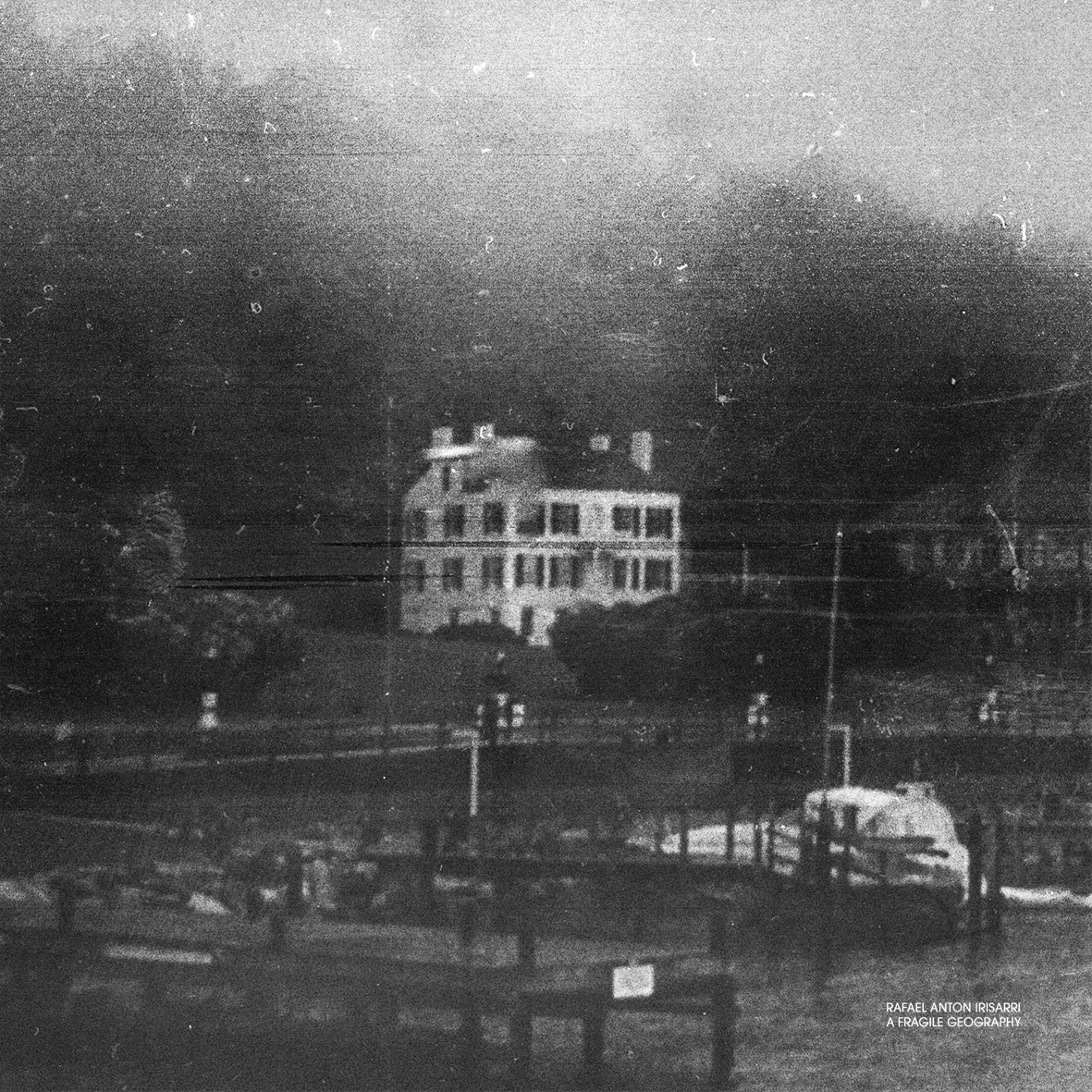 Irisarri’s latest album is not rooted in a particularly happy place, as it was recorded after most of his gear and possessions were stolen during a cross-country move.  The experience ultimately proved to be artistically liberating though: without his usual studio set-up or his backlog of material to work with, Rafael decided to use the occasion as an opportunity for an aesthetic rebirth.  That was the plan, anyway–to my ears, A Fragile Geography is not a particularly radical or revelatory transformation.  It certainly feels a bit more structured, composed, and grainy than before, but is still basically more of the likable and warmly hissing synth-based ambient music that I have grown to expect from Irisarri (albeit now with slightly broader appeal).  Fans of label head Lawrence English or early (read: less dissonant) Tim Hecker will likely find this album appealing, while longtime Irisarri enthusiasts will presumably require no adjustment period at all to appreciate his change of course.
Irisarri’s latest album is not rooted in a particularly happy place, as it was recorded after most of his gear and possessions were stolen during a cross-country move.  The experience ultimately proved to be artistically liberating though: without his usual studio set-up or his backlog of material to work with, Rafael decided to use the occasion as an opportunity for an aesthetic rebirth.  That was the plan, anyway–to my ears, A Fragile Geography is not a particularly radical or revelatory transformation.  It certainly feels a bit more structured, composed, and grainy than before, but is still basically more of the likable and warmly hissing synth-based ambient music that I have grown to expect from Irisarri (albeit now with slightly broader appeal).  Fans of label head Lawrence English or early (read: less dissonant) Tim Hecker will likely find this album appealing, while longtime Irisarri enthusiasts will presumably require no adjustment period at all to appreciate his change of course.
